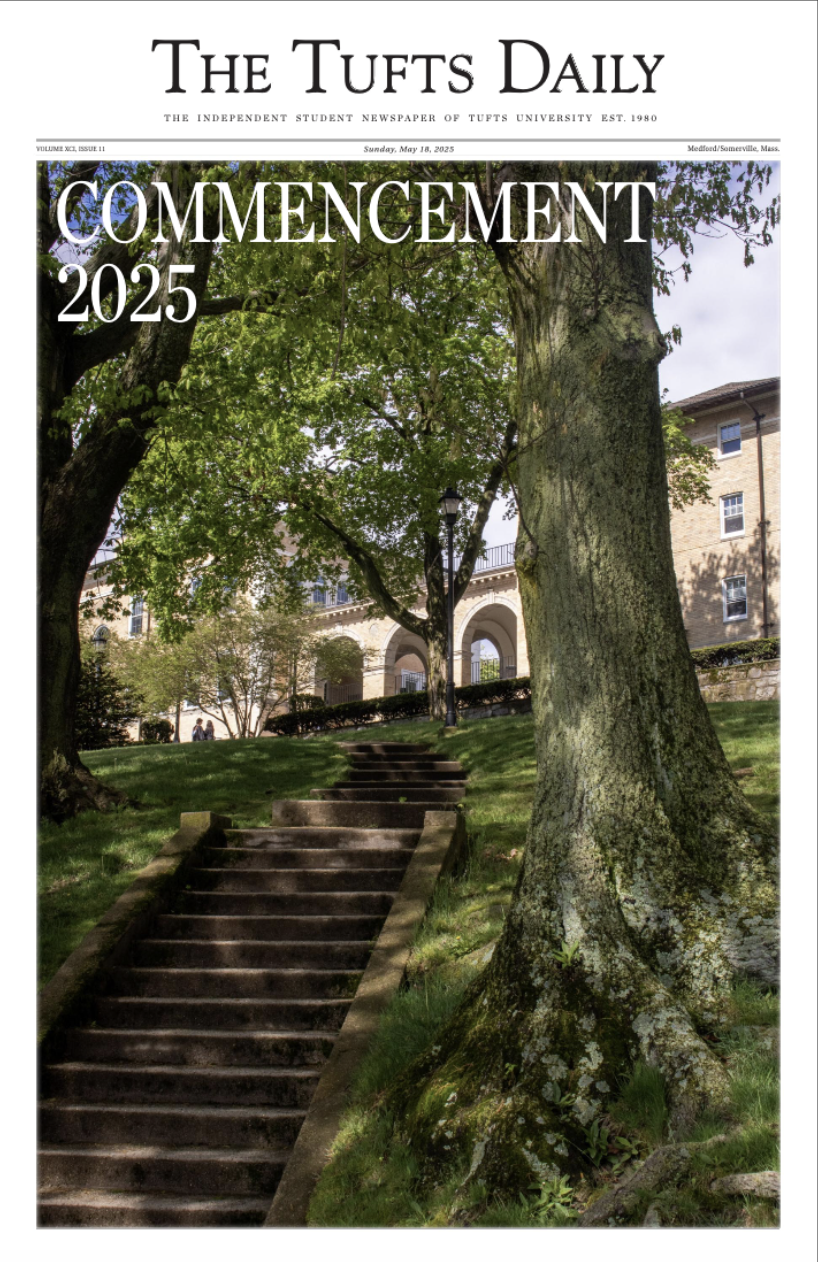Three months into 2021, we are at the one-year mark of when the COVID-19 pandemic first shook the Tufts community. But from the earliest days of the pandemic, when former President Donald Trump began his rhetorical attacks on the “Chinese virus,” the spread of the pandemic has been accompanied by an increase in xenophobic attacks on Asian Americans. By the end of 2020, anti-Asian hate crimes hadincreased by 150% in major U.S. cities relative to the previous year — a statistic that looks all the more dire when we take into account the fact that hate crime data is oftenunderreported. This wave of hate has spilled into the new year, and just last week it included the depravedmurder of eight people, including six women of Asian descent, in Atlanta.
The Daily stands in solidarity with Asian American and Pacific Islander communities. These acts of violence and hate are unacceptable, as are the ways in which Asian Americans have facedsocial and legal discrimination for over 150 years. Moving forward, it is urgent that Tufts evaluate how it, as an institution, can better serve the Asian American communities on and off campus. Furthermore, as members of the Tufts community, it is our responsibility to combat anti-Asian racism and foster an inclusive, safe environment.
Asian students are, and will remain, an integral part of the Tufts community. According todata released by the Office of Undergraduate Admissions regarding the Class of 2025, students of color represent more than half of U.S. applicants for the first time. Among them, Native Hawaiian and Pacific Islander applications increased by 35% and Asia remained the most represented region among international applications. As students of Asian descent from all over the world continue to matriculate at Tufts, the university and the non-Asian segments of the student body must commit to making this campus a safe one for them.
Tragically, Tufts has not been exempt from the anti-Asian racism that permeates American history. In 2009,a fight broke out when a white Tufts student told members of the Korean Student Association to “go back to China” and threatened to kill them. Tufts’ Asian American Center, meanwhile, was created in the aftermath of an incident in the 1980s wherein fraternity pledges wereinstructed to yell anti-Asian slurs outside of a residence for Asian American students.
These incidents illustrate that Tufts’ history cannot be separated from American history; the dark stain of anti-Asian racism bleeds into both. The fact that the latter incident was followed by the creation of the Asian American Center also shows that Tufts is not helpless in the face of hate, and has the power to build and support inclusive institutions on campus — going forward, however, it should not need to wait for moments of crisis to do so.
As an institution, Tufts is responsible to more communities than just those represented in its student body. A 2009analysis conducted by Tufts’ urban and environmental policy and planning department indicated that of all the neighborhoods in Boston, Chinatown is most vulnerable to gentrification — a fact that cannot be separated from Chinatown’s proximity to Tufts Medical Center. Historically, the Tufts Medical Center-Chinatown relationship has included multiple bids by Tufts Medical Center to buy land in Chinatown, facing resistance from members of the local Chinese community. The strained relationship continues today,as demand for housing from medical students makes it harder for Chinatown locals to find affordable rent. The area’s gentrification represents one way in which Tufts’ presence has concrete consequences for the well-being of Asians and Asian Americans.
To genuinely show support for Asian and Asian American communities, Tufts must go beyond releasing statements of solidarity and actually take tangible action. Fighting for security and a safe environment for these communities requires building institutions that support them, and mitigating the effects of institutions that harm them. As students, it is our responsibility to pressure the university to take these actions, in addition to fostering inclusive social spaces and calling out anti-Asian racism wherever it occurs.





